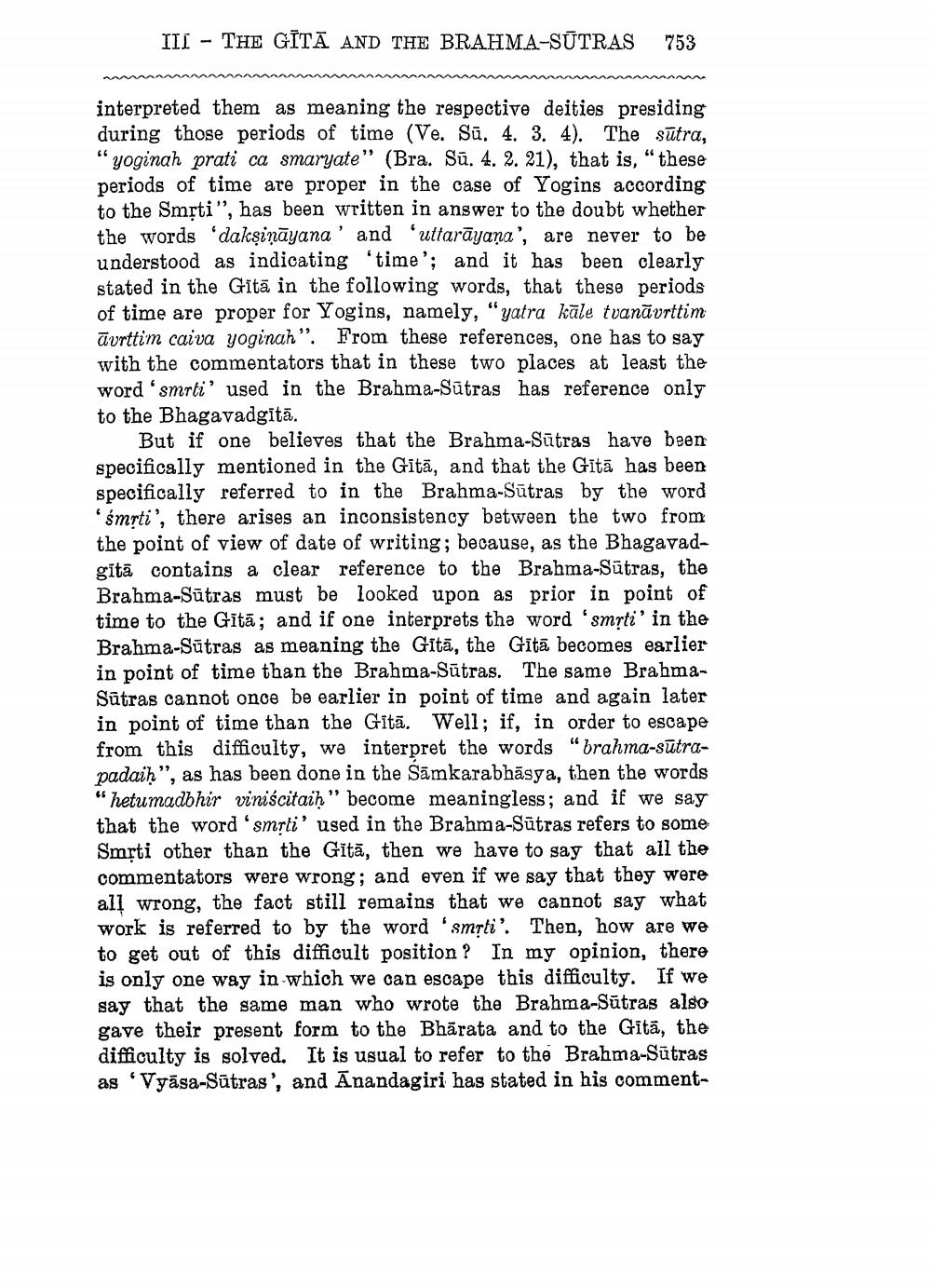________________
III - THE GĪTĀ AND THE BRAHMA-SŪTRAS 753
interpreted them as meaning the respective deities presiding during those periods of time (Ve. Sū. 4. 3. 4). The sūtra, "yoginah prati ca smaryate" (Bra. Sū. 4. 2. 21), that is, "these periods of time are proper in the case of Yogins according to the Smrti", has been written in answer to the doubt whether the words 'dakşiņāyana' and "uttarāyana', are never to be understood as indicating 'time'; and it has been clearly stated in the Gitā in the following words, that these periods of time are proper for Yogins, namely, "yatra kāle tvanāvrttim ūvrttim caiva yoginah”. From these references, one has to say with the commentators that in these two places at least the word 'smrti' used in the Brahma-Sūtras has reference only to the Bhagavadgitā.
But if one believes that the Brahma-Sūtras have been specifically mentioned in the Gītā, and that the Gītā has been specifically referred to in the Brahma-Sūtras by the word 'śmrti', there arises an inconsistency between the two from the point of view of date of writing; because, as the Bhagavadgitā contains a clear reference to the Brahma-Sūtras, the Brahma-Sūtras must be looked upon as prior in point of time to the Gītā; and if one interprets the word 'smrti' in the Brahma-Sūtras as meaning the Gitā, the Gītā becomes earlier in point of time than the Brahma-Sūtras. The same BrahmaSūtras cannot once be earlier in point of time and again later in point of time than the Gitā. Well; if, in order to escape from this difficulty, we interpret the words “brahma-sūtrapadaih", as has been done in the Sāmkarabhāsya, then the words "hetumadbhir viniścitaih" become meaningless; and if we say that the word 'smrti' used in the Brahma-Sūtras refers to some Smrti other than the Gitā, then we have to say that all the commentators were wrong; and even if we say that they were all wrong, the fact still remains that we cannot say what work is referred to by the word 'smrti'. Then, how are we to get out of this difficult position? In my opinion, there is only one way in which we can escape this difficulty. If we say that the same man who wrote the Brahma-Sūtras also gave their present form to the Bhārata and to the Gitā, the difficulty is solved. It is usual to refer to the Brahma-Sūtras as Vyāsa-Sūtras', and Anandagiri has stated in his comment




